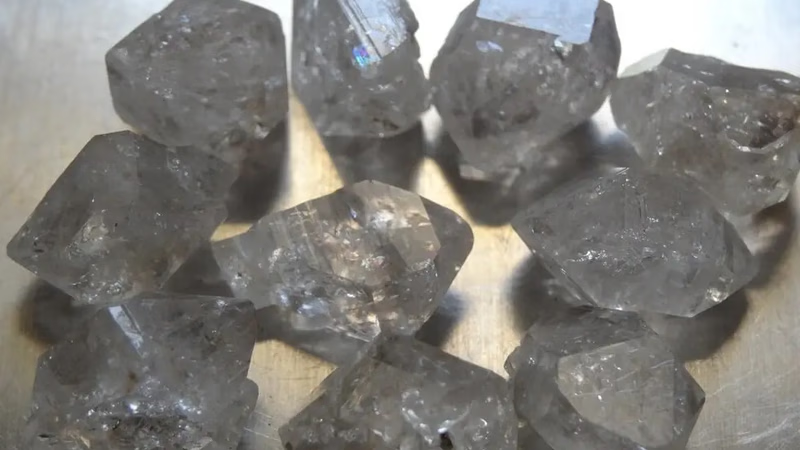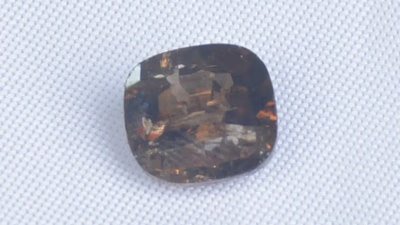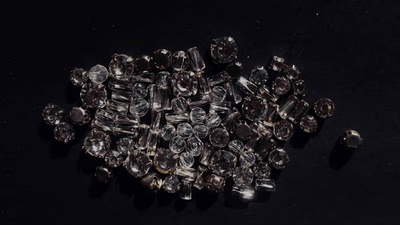
Explore diamond production insights from top countries like Russia.
The top three diamond producing countries are Russia, Botswana, and Canada. Other major producers include South Africa, Angola, and Namibia. In Russia, diamond mining is primarily concentrated in the Sakha Republic, which is located in the northeastern part of the country. The main company responsible for diamond production in Russia is Alrosa, which operates several mines in the region. In Botswana, diamond mining is mainly done by the Debswana Diamond Company, a joint venture between the government of Botswana and De Beers. Canada's diamond production is mostly centered in the Northwest Territories, with the majority of mines operated by the company Dominion Diamond Mines. Overall, these three countries have significant diamond reserves and a well-established mining industry, making them key players in the global diamond market.
Diamonds mined from the coal mine are a major source of diamonds in the world and Africa. Currently, there are mines in Africa, particularly in South Africa as the largest diamond. This product by the miners and African workers from outside the mine and then the highest volume of diamonds mined by capital owners Italian and US to Italy, America and England. Africans only are workers with low wages and discrimination of action to extract and then, from Africa to the bulk of other countries. The production in this country does not the contaminants, including dirt and metal materials are separated and after milling.
Jewelry has many lovers and fans all over the world. This beautiful decoration, usually gemstone can be extracted from the mountain. Of years old, on the Earth there was not even the news of the invented money, rocks were valuable commodities in trade than they used to be. Among the gemstones, diamond has valuable special status and popularity among people all over the world. So that this precious product has a large volume of trade in decorative products.
Russia is the largest producer of diamonds in the world. The country's diamond mining industry is centered around the Sakha Republic (Yakutia) in northeastern Russia, home to several large diamond mines, including the famous Mirny Mine. Russia has significant diamond reserves and utilizes both open-pit and underground mining methods. Botswana is one of the leading diamond producers and has a long history of diamond mining. The country's diamond industry is largely operated by Debswana, a joint venture between the Botswana government and De Beers, a prominent diamond company. Botswana's diamond mines, such as Jwaneng and Orapa, are known for producing high-quality gemstones.
Canada has emerged as a significant diamond producer in recent decades. The country's diamond mining operations are primarily located in the Northwest Territories and Nunavut. The Ekati and Diavik mines are among the most notable diamond mines in Canada. Canadian diamonds are known for their exceptional quality and ethical mining practices. Australia is another important diamond producer. The Argyle diamond mine, located in Western Australia, was one of the world's largest sources of diamonds until its closure in 2020. Australia also has other smaller diamond mines, such as the Ellendale mine. Australian diamonds are renowned for their unique pink and champagne colors.
-

The leading diamond-producing countries are Russia, Botswana, and Canada, with significant contributions from South Africa, Angola, and Namibia. Russia dominates the market with its diamond mining concentrated in the Sakha Republic, primarily managed by Alrosa. Botswana"s diamond industry is largely driven by the Debswana Diamond Company, a collaboration between the government and De Beers. Canada has become a notable player in recent years, with major operations in the Northwest Territories led by Dominion Diamond Mines. These nations possess substantial diamond reserves and established mining sectors that influence global trade dynamics. The article also highlights the historical context of diamonds as valuable commodities and their role in jewelry markets worldwide. While Africa remains a key region for diamond extraction, issues such as low wages and discrimination among local workers persist. The quality of diamonds varies across regions, with Canadian diamonds recognized for ethical practices and high standards.
Australia was once a major contributor through its Argyle mine but has seen production decline since its closure in 2020. "
-

No significant diamond mines have been discovered in West Asia, particularly in the Middle East, due to unfavorable geological conditions. The region lacks the necessary formations for diamond deposits, which are typically found in areas like Africa and Russia. Recent findings of diamond particles in Iran"s Sistan and Baluchestan province have sparked interest, but experts remain skeptical about the potential for large-scale mining operations. While some believe there may be undiscovered reserves due to geological similarities with neighboring Afghanistan, extensive exploration has yet to occur. The UAE has emerged as a key player in the diamond trade, focusing on trading and retail rather than mining. Despite the absence of local mines, the global diamond market remains economically significant, with diamonds valued higher than other gemstones and precious metals. "
-

The United States leads global diamond consumption, with major retail hubs in cities like New York and Los Angeles. While it has some cutting and polishing facilities, the U. S. primarily relies on imports for its diamond supply. India stands out as the largest diamond cutting and polishing center, with significant domestic demand driven by a growing middle class. The United Arab Emirates, particularly Dubai, has emerged as a key player in the diamond trade due to its strategic location and business-friendly environment. Major diamond-producing countries include the Netherlands, Russia, America, India, and Belgium, with Belgium recognized for its high-quality cuts and extensive trading network. Antwerp is noted as the global diamond trading capital, facilitating international transactions.
Other notable markets include China, where rising disposable incomes are increasing demand for luxury goods like diamonds. Despite a downturn in market conditions affecting countries like Iran, which has seen a decline in its consumption ranking, the overall landscape of diamond trade remains dynamic across regions.
-

The diamond market in West Asia is characterized by limited public information regarding large diamonds held by central banks and private collectors. Notable diamonds like the Darya-i-Noor, Noor-ul-Ain, and Taj-i-Mah are part of Iran"s Crown Jewels, showcasing the country"s rich history with precious gemstones. The Darya-i-Noor, weighing approximately 182 carats and known for its pale pink color, is displayed in Tehran"s Treasury of National Jewels. Saudi Arabia and the UAE also possess significant diamond collections, although specific details about individual diamonds remain scarce due to privacy concerns. Dubai has emerged as a global hub for luxury goods, including diamonds, facilitating numerous auctions and private sales. Other countries in the region, such as Kuwait and Qatar, likely have valuable collections but lack publicly available information. The dynamic nature of the diamond market means ownership can change frequently through sales or private transactions. Overall, while Iran"s collection is well-documented, other West Asian nations maintain a level of secrecy regarding their diamond holdings.
-

The diamond trade is evolving due to shifting consumer preferences, particularly among younger generations who prioritize sustainability and ethical sourcing. This trend is driving demand for lab-grown diamonds and customizable jewelry. Technological advancements in diamond synthesis are expected to further influence market dynamics, as lab-grown diamonds become more prevalent. Additionally, the importance of traceability and ethical practices in the supply chain is increasing, reflecting consumer concerns about the environmental impact of mining. Economic factors and geopolitical changes also play a significant role in the diamond economy, with fluctuations in global conditions affecting demand and prices. Iran"s potential for diamond exploration, particularly in ophiolite belts, could reshape its position in the market. The rise of emerging markets like China and India is contributing to increased luxury goods consumption, including diamonds. E-commerce is transforming retail within the industry, providing consumers with convenient access to diamonds online.
As these trends continue to develop, they will shape the future landscape of the diamond trade. "





